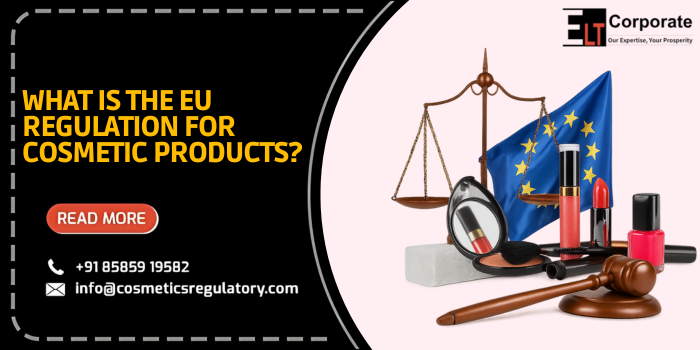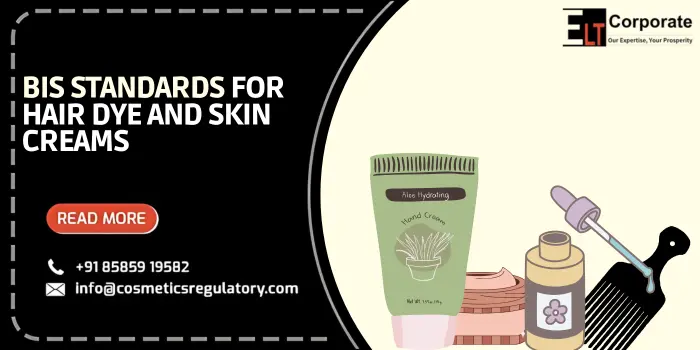The European Union (EU) has one of the strictest frameworks for cosmetic products in the world. The main law cosmetics regulation (EC) is number 1223/2009, which came into force on July 11, 2013, and changed the instructions of the earlier cosmetics. Unlike the instructions, this regulation directly applies to member states of the European Union, which ensures similar compliance and high consumer safety standards.
For businesses wishing to enter the European Union Cosmetic Market, it is necessary to understand this regulation.
What is the EU Cosmetic Regulation (EC) No. 1223/2009?
The regulation establishes rules to ensure that cosmetic products placed on the European Union market are safe for human health. This includes product composition, safety assessment, manufacturing standards, labelling, claims and post-mortem monitoring. The scope extends to all products, which extend to external contact for cleaning, beautifying, earning or replacing for external contact with the human body.
Why is the Regulation Important?
Compliance provides:
- Consumer Safety – Strict security assessment before entering the market.
- Transparency – clear label and compulsory disclosure of materials.
- Market Access-Gar-Aupal Husbandry may ban all European Union states.
- Brand Trust-Panchayat creates long-term consumer trust.
- Legal Protection – Preventing recall, penalty and liability cases.
Role of the Responsible Person (RP)
Each cosmetic product should have a responsible person (RP) within the European Union.
Duties include:
- Holding the Product Information File (PIF).
- Preparing the Cosmetic Product Safety Report (CPSR).
- Submit details on the Cosmetic Products Notification Portal (CPNP).
- Ensuring labelling and claims compliance.
- Reporting Serious Undesirable Effects (SUEs) to national authorities.
- Acting as the contact point for regulatory inspections.
Good Manufacturing Practices (GMP)
All cosmetics should be produced according to good manufacturing practices (ISO 22716). It ensures frequent quality, traceability and hygiene standards in production. Manufacturers should provide evidence of GMP compliance in PIF.
Safety and Efficacy Requirements
Before a cosmetic is marketed in the EU:
- A qualified security evaluator should compile a cosmetic product safety report (CPSR).
- Claims (eg, “anti-ageing”, “moisturizing”) should follow the regulation of claims of the European Union (655/2013) and be supported by evidence.
- The CPSR consists of two parts:
- Part A: Safety Information (toxicology, exposure data, etc.)
- Part B: Safety Assessment (expert opinion on safety).
Nanomaterials and Pre-Market Notification
Cosmetics containing nanomaterials require additional attention:
- The European Commission must be notified six months before placing it on the market.
- Safety data specific to nanomaterials must be submitted.
- Sunscreens, toothpastes, and skin care often use nano-ingredients, making this provision highly relevant.
Labelling & Packaging Obligations
As per Article 19:
- Name & function of the product.
- Ingredient list (INCI nomenclature).
- Nominal quantity (ml or g).
- Date of minimum durability (“best before”) if <30 months OR Period After Opening (PAO) symbol if >30 months.
- Batch/lot number.
- Country of origin (if imported).
- Warnings or precautions for safe use.
- Contact details of the Responsible Person.
- Language requirement: All mandatory information must be in the official language(s) of the EU country of sale.
Notification through CPNP (Cosmetic Products Notification Portal)
Before placing a product on the market, the RP must notify it on the CPNP. Authorities and poison centres use this database for market surveillance and emergency health response. Notification is free but compulsory.
Documentation & Product Information File (PIF)
The RP must maintain a PIF for 10 years after the last batch of the product is placed on the market. It must include:
- Product description.
- Cosmetic Product Safety Report (CPSR).
- GMP compliance evidence.
- Proof of claimed effects.
- Data on any animal testing performed (historical).
Key Prohibitions under EU Law
The regulation prohibits:
- Ingredients listed in Annexe II (banned substances).
- Exceeding limits for restricted substances in Annexe III.
- Use of certain colourants, preservatives, and UV filters is permitted only in Annexe IV–VI.
- Animal testing for cosmetic products and ingredients.
- Misleading claims that deceive consumers.
Serious Undesirable Effects (SUE) & Market Surveillance
If a product causes a Serious Undesirable Effect (SUE) such as hospitalisation, infection, or allergic reaction:
- The RP must report immediately to national authorities.
- Information is shared across the EU through the RAPEX system (Rapid Alert for dangerous non-food products).
Period for Regulatory Validity and Obligations
- No pre-approval system exists in the EU. Cosmetics do not undergo licensing like in India.
- CPNP Notification: one-time submission before sale.
- PIF & CPSR: must be maintained for 10 years.
- Ongoing obligations: GMP, accurate labelling, claims compliance, and post-market surveillance.
India vs EU Cosmetic Compliance (Comparison Table)
| Aspect | India (CDSCO, Cosmetics Rules 2020) | European Union (Regulation EC 1223/2009) |
| Regulatory Authority | Central Drugs Standard Control Organisation (CDSCO) | European Commission & Member State Authorities |
| Primary Law | Drugs & Cosmetics Act, 1940 + Cosmetics Rules, 2020 | Cosmetics Regulation (EC) No. 1223/2009 |
| Market Entry Requirement | Import license (Form COS-2) via the SUGAM portal | CPNP (Cosmetic Products Notification Portal) notification |
| Responsible Entity | Importer or Authorised Indian Agent (AIA) | Responsible Person (RP) based in EU |
| Approval Validity | Import License valid for 5 years | No pre-approval system; PIF retained for 10 years |
| Safety Requirements | Ingredient list, Free Sale Certificate, Non-animal testing declaration | Cosmetic Product Safety Report (CPSR), toxicological profile, exposure data |
| Manufacturing Standards | Must follow BIS standards for specific categories | Mandatory GMP compliance (ISO 22716) |
| Labelling Requirements | Legal Metrology (Packaged Commodities) Rules + CDSCO guidelines | Article 19 labelling, INCI ingredients, durability/PAO, warnings |
| Nanomaterials | Not specifically regulated | Mandatory 6-month pre-notification before marketing |
| Animal Testing | Declaration required (not permitted under Indian law) | Completely banned for ingredients & finished products |
| Enforcement & Penalties | CDSCO inspections, product seizure, and cancellation of license | RAPEX system, recalls, market surveillance by authorities |
| Post-Market Surveillance | Limited, mostly importer-driven | Mandatory SUE reporting to authorities, EU-wide monitoring |
Conclusion
The European Union cosmetic regulation (EC) number 1223/2009 sets a high bar for security and transparency. Unlike India, where importers require licenses, the European Union focuses on accountability, notification and continuous monitoring. For smooth European Union market entry, brands should prioritise compliance with GMP, accurate documentation, nanomaterial evaluation and regulation of claims. Completing these standards is not only about legal compliance-it is the key to consumer trust and long-term success in Europe.
FAQs
1. What is the major regulation for cosmetics in the European Union?
Cosmetics Cosmetics Regulation (EC) number 1223/2009 controls all cosmetic products in the European Union.
2. Who can work as a responsible person?
Any legal unit or person established in the European Union (manufacturer, importer, or third-party) can be appointed.
3. Is animal testing allowed for cosmetics in the EU?
No, both finished products and ingredients are banned from animal testing.
4. Do cosmetics require pre-marketing before marketing?
Instead, they should be informed on CPNP and have a valid PIF.
5. How long should the product information file (PIF) be kept?
Cosmetics have been kept on the market for at least 10 years for the last batch.



